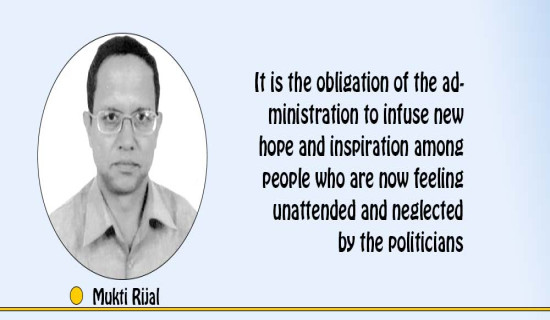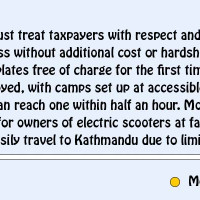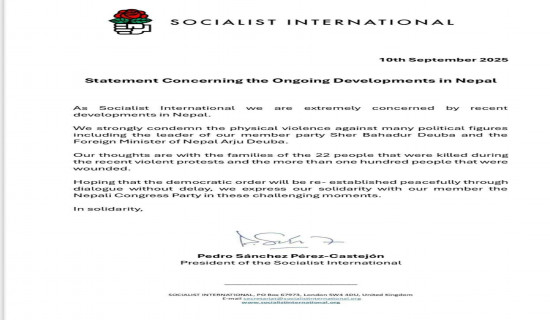- Friday, 12 September 2025
Nepal Needs To Regulate OTT Platforms
The Over the Top (OTT) platforms have revolutionised the entertainment industry in recent years. There was a time when people used to wait for their favourite TV shows to air on television but now all they need is an internet connection and a device to stream content. These platforms have become increasingly popular even in Nepal in recent period with millions of people accessing these services. With an 11th amendment to the National Broadcasting Rule on March 3, 2022, the Ministry of Communications and Information Technology introduced the licensing requirements to operate OTT services in the country. As per the law, OTT service providers are required have to obtain a license. Sub-rule 2 of Rule 2 defines OTT as a service broadcast over the internet without cable or satellite.
Age suitability
The rule says if a company adds a member or customer in Nepal, they must set up a cache server in the country and store their financial transactions with customers on their servers. And failure to comply with these criteria will result in the company not being able to obtain a license from the government. Similarly, the amendment provides that the content on OTT platforms must be categorised according to age suitability. The ‘U’ category refers to the content appropriate for all age groups, while the ‘A’ rating is for content that is only suitable for those above 18 years old. And the ‘R’ rating is given to content that is appropriate for the age group between (10-18 years).
However, in actuality, the regulation of OTT platforms through the National Broadcasting Rule has not been effective. Several issues including the definitions of OTT, registration, content rating, among others, have been raised and are still unaddressed. The new definition provides any apps or platforms that publish content through the internet and streaming services on other platforms will fall under the OTT category which means that all platforms that stream content through the internet, regardless of the video’s duration will now be considered OTT platforms. As a result, popular video streaming apps like TikTok, and Facebook may also be included under this new definition. Foreign OTT platforms like Netflix, Amazon, Sony Live, and Alt Balaji are in operation in Nepal.
The amendment fails to regulate such Otile apps. As a result, more than Rs. 7 billion is going abroad annually without paying any tax from Nepal through such OTT. In the nation, broadcasting foreign television content requires downlink permission as per the National Broadcasting Act. Despite this, foreign OTT platforms are distributing television content in the country even without having such permission. Even after amending the rules, this issue remains unsolved. The most controversial issue associated with OTT is censorship in Nepal. The uncensored foreign audio-visual materials are easily accessible through OTT services. This has led to the broadcasting of anti-national sentiment, hate speech and inappropriate content. The audiences are exposed to content that is offensive and the ironic part is our country has no provision for censoring the contents promoting obscenity and vulgarity.
Regulating OTT platforms in the country is not a straightforward task as it involves numerous challenges and technicalities. First, the nation should develop a framework based on sound regulatory principles. The government must ensure that any regulatory measures do not infringe upon the rights of people. Whatever amendments are made to the rule, they are not sufficient in their current form. In the present scenario, the legislation to regulate foreign OTT platforms in Nepal is the foremost requirement. Additionally, the guidelines for data protection and privacy shall be established so that the personal data of users is protected on these platforms. But the regulations shall not unduly restrict freedom of expression and access to information. In India, the government issued the Information Technology (Intermediary Guidelines and Digital Media Ethics Code) Rules, 2021 for the regulation of OTT platforms there.
Classification of contents
The code of ethics introduced in the rules set out guidelines for the classification of contents based on the viewer’s age, themes, content, tone and impact, and target audience; and requires OTT platforms to give due consideration to sovereignty, security, friendly relations with India. Overall India’s approach can be termed as a light-touch ‘co-regulation’ model where there is ‘self-regulation’ at the industry level and the final ‘oversight mechanism’ at the ministry level. Similarly, in Singapore, OTT platforms are regulated by the Infocomm Media Development Authority (IMDA) where all the contents have to be rated according to Film Classification Guidelines to aid parental guidance and allow for informed viewing choices.
The regulation of OTT platforms is a step towards a digital economy. It has the potential to generate revenue through taxation. In this digital era where numerous platforms are available, it is crucial for the government and authorities to consider the interests of all stakeholders and strike a balance that leads to a harmonised system where licensing, regulation, censorship, and various other complicated issues get settled and also the growth of these platforms is not compromised.
(Rijal is a student at Kathmandu School of Law. rijalsuravi6@gmail.com)
















